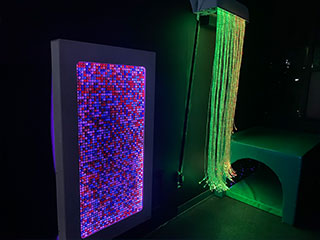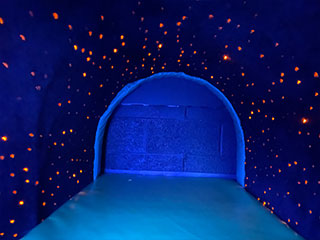During This Season Of Giving, The Children’s Guild Focuses On Supporting Neurodiversity In Children

A specially designed playground waits for students at Transformation Academy
Campaign to Raise $25,000 to Unlock the Potential for a Brighter Future
During this season of giving, The Children’s Guild, a leading Mid-Atlantic nonprofit organization serving children, families, and child serving organizations is supporting Neurodiversity in Children with a goal of raising $25,000 to improve special education services. Celebrating its 70th anniversary, The Children’s Guild is focused on helping students and families find success socially, emotionally, educationally, and developmentally through special education and charter schools, school-based mental health services, treatment foster care, autism services, family mental and behavioral health services, and workforce development programs.
The Children’s Guild recently published Understanding Neurodiversity in Children and what it means to be neurodivergent, a term used to describe individuals whose brains process, learn, or behave differently from what is considered typical neurological development (neurotypical). At The Children’s Guild (TCG) the staff is trained to meet neurodiverse students where they are with tangible resources so they can experience more success. TCG oversees nonpublic, charter, and public schools, as well as programs for children at all different learning and emotional levels. Since its inception in 1953, The Children’s Guild operates schools serving students with significant behavioral and academic issues including emotional disturbance, autism across the spectrum, developmental disabilities, and any combination of those disabilities.
Of the world’s population, 15-20 percent exhibit some form of neurodivergence. Although the word refers to the diversity of all people, it is often used in the context of autism spectrum disorder, as well as other neurological or developmental conditions, such as ADHD or learning disabilities. About 1 in 6 (17%) children aged 3–17 years were diagnosed with a developmental disability, as reported by parents, during a study period of 2009-2017. These included autism and attention-deficit/hyperactivity.
Understanding Neurodiversity in Children provides definitions on the types of neurodiversity and signs to look for and how best to support a neurodivergent loved one. The three most common types are:
- Autism Spectrum Disorder (ASD): A broad range of conditions characterized by challenges with social skills, repetitive behaviors, speech, and nonverbal communication. Signs of autism usually appear by age 2 or 3, and some even earlier. About 1 in 36 children have been identified with ASD, according to estimates from the CDC’s Autism and Developmental Disabilities Monitoring (ADDM) Network. Autism is reported to occur in all racial, ethnic, and socioeconomic groups and is nearly 4 times more common among boys than among girls.
- Attention Deficit/Hyperactivity Disorder (ADHD): A neurodevelopmental condition characterized by persistent inattention, hyperactivity, and impulsivity. ADHD symptoms start before age 12, and in some children, they’re noticeable as early as 3 years of age. The CDC suggests that around 9.4% of all children are diagnosed with ADHD at some point before the age of 18.
- Dyslexia: A specific learning disorder that primarily affects reading skills. Dyslexia symptoms can appear as early as preschool age. According to the Yale Center for Dyslexia and Creativity, dyslexia affects 20% of the population.
Since neurodiversity refers to the unique way that each person’s brain develops, it is not preventable, treatable, or curable but some of the conditions that cause a person to be neurodivergent are manageable. The best ways to help a neurodivergent child is to provide sensory-friendly spaces by reducing noise levels, using soft lighting, or providing access to sensory tools like noise-canceling headphones or fidget toys. Allow for sensory breaks if sensory overload occurs. Provide targeted social skills training programs on understanding nonverbal cues and maintaining conversations and establish predictable routines and visual schedules and breaking down complex tasks into smaller chunks.
Society has shifted greatly in the past few years in its understanding of the importance and diversity of how the brain operates. Advancements have been in special education, with approaches becoming centered around how people with assorted neurodivergent tendencies learn best. The Children’s Guild schools and programs are committed to providing a supportive and nurturing environment for neurodiverse students. During this Season of Giving, support The Children’s Guild and help them reach their goal of raising $25,000 to support neurodiverse students throughout their schools and programs. Click here to learn how to give.
Schools and programs of The Children’s Guild include Monarch Academy Annapolis, Monarch Academy Glen Burnie, Monarch Global Academy Laurel, Monarch Preschool College Park, The Children’s Guild DC PCS, The Children’s Guild School of Baltimore, The Children’s Guild School of Prince George’s County, The Children’s Guild: Transformation Academy, The Janet & Frank Kelly Autism Center, TranZed Academy for Working Students, TranZed Apprenticeships, and Outpatient Mental Health Clinic. For more information, visit https://childrensguild.org/.













